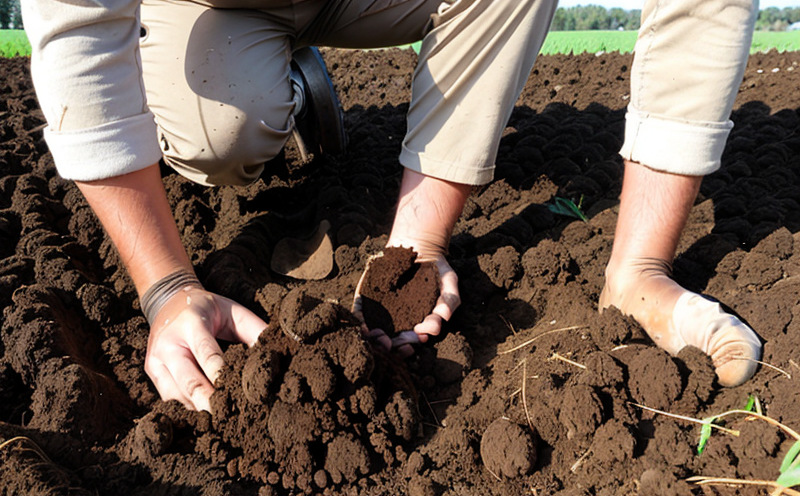Soil Lime Requirement Testing
The soil lime requirement test is a critical component of agricultural and forestry testing. This test helps determine the amount of lime needed to bring the pH level of soil up to an optimal range for crop growth, thereby enhancing plant health and productivity.
Soil pH affects nutrient availability, microbial activity, and overall soil fertility. Lime (calcium carbonate) is frequently added to acidic soils to neutralize their acidity and improve these conditions. The test measures the amount of lime required based on the soil's current pH level, its buffering capacity, and other factors.
Buffering capacity refers to a soil’s ability to resist changes in pH when an acid or base is added. Soils with low buffering capacities are more responsive to liming. The test involves several steps: collecting soil samples from various depths, mixing them thoroughly, and then determining the quantity of lime required per unit volume of soil.
The process also includes understanding the soil’s cation exchange capacity (CEC), which is a measure of how much positively charged ions the soil can hold. Lime affects this significantly as it introduces calcium ions that compete with other cations for binding sites in the soil. This is why lime requirement testing is so important – it ensures that the correct amount of lime is added to maximize its effect on soil structure and fertility.
Understanding soil lime requirements can also help prevent overliming, which can lead to nutrient imbalances or toxicity issues for plants. Overliming reduces the availability of essential plant nutrients like iron, manganese, zinc, and copper, leading to deficiencies that can negatively impact crop yields and quality.
In summary, this test is vital for optimizing soil conditions for agriculture and forestry practices by ensuring that the right amount of lime is applied. This not only enhances the growth potential of crops but also contributes to sustainable agricultural practices.
Scope and Methodology
The scope of soil lime requirement testing encompasses a detailed analysis of various parameters that influence the buffering capacity and acidity levels of soils. The methodology involves collecting samples from different depths within the soil profile, mixing them thoroughly to ensure homogeneity, and then conducting laboratory tests.
- Sample Collection: Soil samples are taken using a soil auger or probe at various depths (usually 0-15 cm, 15-30 cm, and beyond). This ensures that the test reflects the overall soil conditions across different layers.
- Mixing and Preparation: The collected samples are mixed thoroughly to homogenize the sample. This step is crucial for accurate testing as it prevents localized differences in soil properties from skewing results.
- Lime Addition: Lime (calcium carbonate) is added incrementally until a pH neutral point is achieved, typically around 7.0. The amount of lime required to reach this point is measured and recorded.
- Data Analysis: The test results are analyzed using standard methods such as the National Soil Laboratory Association (NSLA) or American Society for Testing and Materials (ASTM) protocols. These standards provide a consistent approach to interpreting soil pH and lime requirements.
Benefits
- Optimized Crop Growth: By determining the correct amount of lime needed, this test ensures that crops receive the optimal growing conditions necessary for their health and productivity.
- Avoidance of Overliming: The test helps prevent the addition of excessive amounts of lime, which can lead to nutrient imbalances and toxicity issues in plants.
- Sustainable Practices: Proper liming contributes to sustainable agricultural practices by promoting soil health and reducing the environmental impact of overuse of fertilizers.
- Better Resource Management: The accurate application of lime ensures that resources are used efficiently, leading to cost savings for farmers and foresters.
Use Cases and Application Examples
The soil lime requirement test is widely applicable across various agricultural and forestry contexts. Here are some specific use cases:
- Crop Production: Farmers often use this test to determine the amount of lime needed for their fields before planting. This ensures that crops have the best possible growing conditions from the start.
- Soil Rehabilitation: In areas where soil has been degraded due to overuse or poor management practices, lime requirement tests can help rehabilitate soils and restore their fertility.
- Tree Planting: When planting trees in forested areas, this test helps ensure that the soil is optimized for tree growth. This is particularly important when dealing with acid-loving plants where excess lime could be detrimental.
In these scenarios, the test provides a scientific basis for decision-making, ensuring that resources are used effectively and efficiently.





